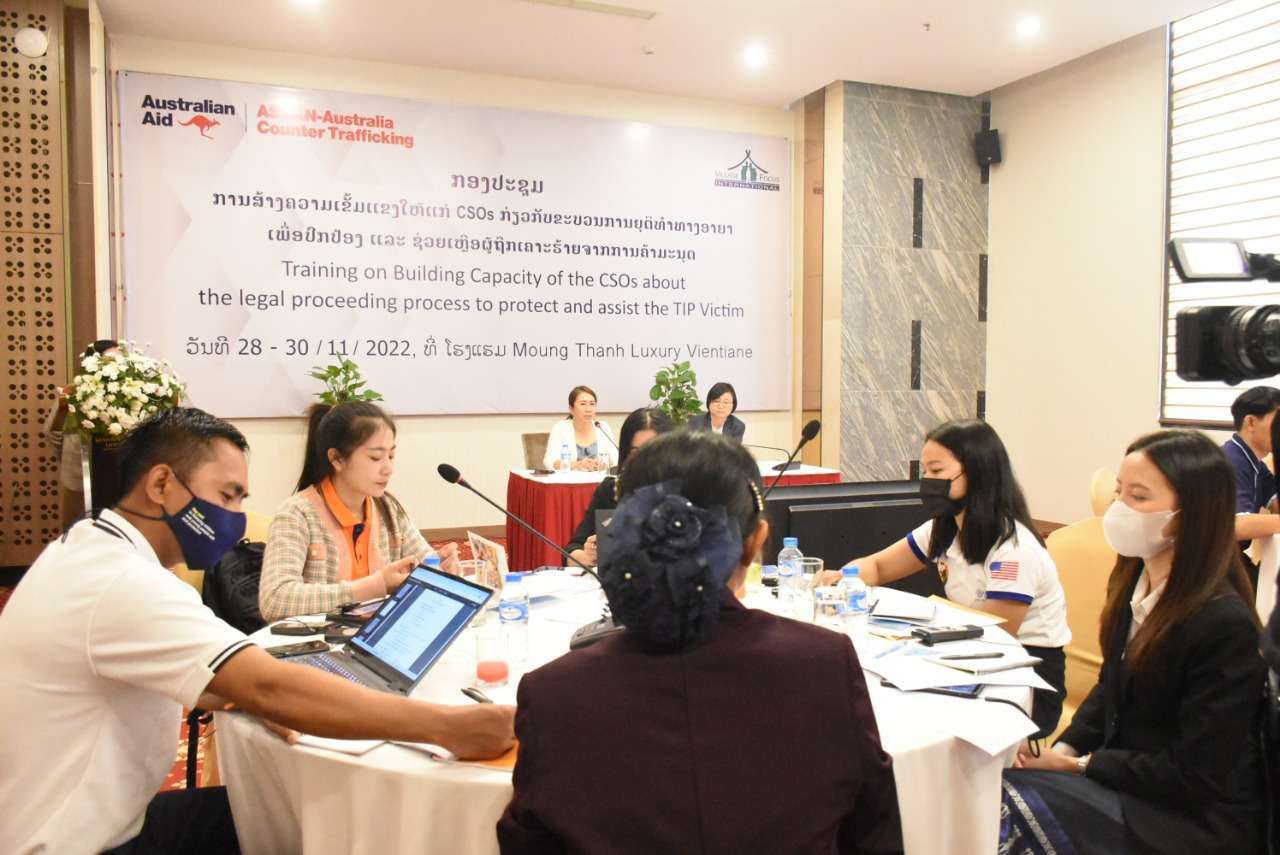
Most victims of trafficking are unidentified, unsupported, and uncompensated for the harm and losses caused by the experience of being trafficked. A key reason for this is the limited capacity of government officials and civil society organisations (CSOs) to correctly and consistently identify potential victims.
Traditionally, in Lao PDR, those most vulnerable to human trafficking have been Lao citizens who have migrated to Thailand and other countries for the purpose of work and the prospect of remitting money back home. More recently, however, Laos has emerged as a destination for trafficking, with significant numbers of foreign nationals deceived into working in the Golden Triangle Special Economic Zone in Bokeo Province, and ultimately finding themselves in forced labour conditions that they are unable to escape from.
There are many challenges to identifying, protecting, and supporting victims of trafficking. These include the capacity of government officials, the human and financial resources allocated to combat trafficking, and the concerns and fears of the potential victims themselves, which can result in a reluctance to come forward.
In June 2021, ASEAN-ACT, implemented by DT Global, commenced a grant partnership with Village Focus International (VFI), an NGO focused on improving livelihoods for rural populations in Laos, including reducing vulnerability to TIP and supporting victims of trafficking to return and reintegrate back into their communities.
Through the grant, VFI has worked with other national and provincial counter-trafficking practitioners to develop a handbook to strengthen victim identification, referral, and support, especially at the local level.
The handbook includes indicators to assist both government and non-government responders to identify a potential victim of trafficking and assess experiences of exploitation on a case-by-case basis. It is also a valuable resource to build community resilience to trafficking by educating communities about some of the indicators of trafficking and exploitation.
Vice President of the Ta Kieang Lao Foundation, Thippawan Supathorn, who supported the development of the handbook explained, “Victim identification is still a challenging issue in Lao PDR. In some instances, CSOs [civil society] or other concerning organisations might not understand the regulations or the process of victim identification.”
VFI’s handbook provides a step-by-step guide for CSOs, legal practitioners, local government authorities, and communities themselves to ensure all actors are better equipped with the skills and knowledge they need to prevent and respond to trafficking.
Over 80 civil society and legal professionals from Vientiane and Champasak Province in Southern Laos took part in a series of consultation workshops and training activities to finalise the handbook. And for the first time, an informal network was established to improve cooperation between CSOs, private lawyers, and local government authorities.
Separately, VFI also facilitated a workshop for other organisations in Bokeo province in the North, drawing on the handbook as a guide to improve understanding on how to identify and support a potential victim of trafficking. The new trends of trafficking in persons into the Special Economic Zone in Bokeo was also discussed during the workshop.
Ms Supathorn explained, “This handbook would be very good for supporting the potential victims to accessing protection and victim identification for the community. So, the communities understand the means used in the recruitment for trafficking, forced labour, and labour migration."
In addition to providing guidance on how to identify a possible victim of trafficking, the handbook has a specific focus on victim-centred, gender sensitive, and inclusive approaches. This includes understanding the specific needs and preferences of marginalised groups, especially women and children, ethnic minorities, people living with disabilities, as well as diverse gender and identity groups.
Thawatchai Chalyakumarn, Project Coordinator at Proud to Be Us, reinforced the importance of these considerations. “If the victims are women, we should identify a woman staff [member] for the victim to speak to or allow the victim to identify personnel that they are comfortable talking to,” he said.
By adopting victim-sensitive and inclusive approaches when handling trafficking cases, victims may be more comfortable identifying themselves to government or non-government responders.
As explained by Vatsana Chaiyasingh, a contributor to the handbook, “In some cases, the victims do not wish to cooperate because they are worried their personal information will be shared.”
As human trafficking in Laos and the broader region continues to evolve, this handbook is a critical example of how civil society and communities themselves can play a critical role in progressing a whole of society response to combat this complex crime.